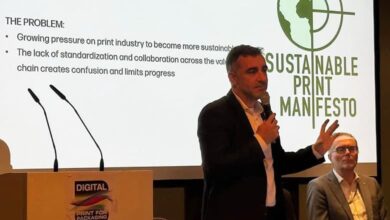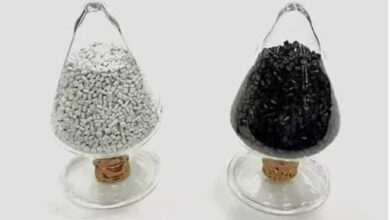
In the two years following the onset of the COVID-19 pandemic, spending on packaging by consumer packaged goods (CPG) brands will continue to grow over the next two years, according to a recent study by US-based L.E.K. Consulting, a global management consulting firm, on CPG brand owners.
While 56% of CPG brand owners reported an increase in spending on packaging since 2019, 78% of international brands with revenue of more than $1 billion plan to increase their spending on packaging. In this context it must be noted that at least a decade ago, recycling moved to the forefront of sustainability.
The pandemic has clearly accelerated and intensified various changes that has an impact on packaging demand, such as changes needed to make packaging more sustainable, increased competition on the shelf, acceleration in e-commerce, and continuing proliferation of stock-keeping units (SKUs).
Sustainability is a significant factor in packaging, with most CPG brand owners citing an increase in the share of sustainable packaging. Most brand owners are focused on the use of packaging materials with top criteria given to recycled content, biodegradable materials, compostable and materials manufactured using renewal energy, in that order. However majority of brand owners said that there is dearth in material recycling facilities (MRFs) to meet the required demand, which in turn adds to supply-side pressures.
However, things are quickly changing. In the last several years, unique and creative reusable packaging systems have hit the market. According to industry sources, replacing a mere 20% of today’s single-use packaging with reusable alternatives creates an opportunity worth almost $10 billion, and plays a pivotal role in reducing plastic pollution.
Some company’s like Chile-based Algramo have gone a step further by incorporating IoT and RFID technology, and electric tricycles that transforms packaging into refillable smart packaging, even bringing refill stations to the consumer’s doorstep.
“Players in the packaging industry able to work with sustainable materials without sacrificing on performance, or design packages that reduce weight but still provide robust production protection from e-commerce, will find themselves with a unique competitive edge,” says L.E.K. Consulting Managing Director, Thilos Henkes.
Given intense competition on the retail shelf, CPG brand owners are investing heavily to win consumers over with packaging as a high ROI tool for awareness, promotion, and sales.
Retail giants and CPG industry leaders Amazon and Walmart have capitalized on the changes in consumer behaviour.
Amazon’s fastest growing category is groceries. Faster delivery times and expanded offerings through Amazon Fresh and Amazon Pantry have improved customer experience and opened a window of opportunity for CPG brands to grow their business through the grocery channels of Amazon.
Walmart’s e-commerce sales in the US jumped 97% as the pandemic continues. As people continue to stay indoors and look for more online shopping options, Walmart took advantage of using online trading. Walmart CEO Doug McMillon thinks that their ability to deliver with speed nationally combined with a few other benefits for customers will result in a compelling proposition. In India, Walmart India’s investment in Indian e-commerce giant Flipkart, helped the US-based company put a strong foot down in India’s online trading space.
Today three forces are driving the CPG digital transformation. Gone are the days when the store shelf was the mainstay of the CPG industry as COVID-19 alone has accelerated e-commerce a decade ahead in a timeframe of less than a year. This new market demands a digital transformation as a pivot to ensure success. Using data to stay focused on the changing needs and behaviour of consumers helps brands remain proactive yet flexible in not just meeting their needs but having a digital marketing strategy that is relevant and current.
Recent changes in consumer behaviour, prompted by all things digital, the CPG landscape in the Middle East and North Africa (MENA) regions is changing too. Brands have started updating their strategies to remain competitive to ensure that they make an impact on their consumers.
As convenience is paramount for the busy online consumers, 85% of them purchase household staples online through auto-replenishment, with consumers seeming eager to invite this digital technology into daily life. In addition to subscription and auto-replenishment, CPG items are being easily and increasingly restocked at the touch of a one-click ordering button.
US-based Consumer Brands Association, which champions innovation and growth for industries dependent on everyday consumer products, reveals five post-pandemic trends that will affect the CPG companies, from consumer-friendly, to logistics and supply chain. The post-pandemic scenario has permanently changed consumer behaviour, and consequently the CPG industry. Consumer demand for products will remain elevated as the annual rate of consumption at homes is higher than the pre-pandemic times.
A solution adopted by CPG brands increasingly is to establish greater control over their customer relationship with connected packaging. This allows shoppers to interact with products by pointing their smart phones at a code printed on the package which provides information, personalized digital experiences, and e-commerce options to enable consumers to interact with the product on delivery.
Since brands typically control their product packaging and labeling, the interactive code creates a first-party connection between the brand and the consumer. This helps brands to gather data directly from the consumer to influence future transactions.
“We’re in the middle of a paradigm shift in the user experience, where consumers have a far greater desire than ever before to access detailed information and personalized experiences when they interact with brands,” says Jos Harrison, Global Head of Brand Experience and Design at UK-based global consumer brand Reckitt.
In India, which has been severely impacted by COVID-19, there are several trends that have emerged in India’s CPG space. Affordable health, hygiene, and organic products have gained traction, with an overall CAGR of 18 to 25 percent, despite the substantial premium that comes with these products. Another area where consumers are focusing on is on the trustworthiness of brands. Non essential items like premium skincare products and expensive wines have also found importance among consumers as a sort of self indulgence or pampering. Consumers have also become aware of lower-cost alternatives, trying out new brands or products.
In today’s scenario, the pandemic has made supply chain strategy a top priority, with an unprecedented opportunity for CPGs to redesign their supply chains with new objectives to drive continuity in business with higher agility. The success of the industry to capitalize on this opportunity will clearly depend on the pace of response to these trends, launching new strategies, while at the same time balancing the pressures of spiraling costs.






172 Comments